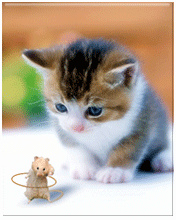





"Flash flood" is one of the graphic art Winanto Taufiq of five works of graphic art in the title "The damage Imaji About Nature" as the first winner in the competition Trienal III Indonaesia Graphic Arts in 2009.
Entering the showroom Bentara Budaya Yogyakarta on the ten-day art lovers to the fore (especially graphic arts) will get the works of graphic art and stunning quality of 50 works of graphic art graphic arts competition the participants titled Indonesia Trienal Graphic Arts III 2009 ".
The works of graphic art on display at the Bentara Budaya Yogyakarta from 13-22 November 2009 to come to represent the achievements in the quality work of art graphic creation of all theories which use graphic techniques such as high printing technique, printing technique in (intaglio), flat printing technique ( lithograph), printing techniques filter (screen printing) as well as various combinations of printing techniques.
The works of graphic art on display looks amazing eye because there is work that treats the work of the latest views on the development of graphic arts world today.
graphic art "Engraver Family With Their Dog Tracker" which was created by using wood and cukil stencil on canvas by Irwanto Lentho.
graphic art "Engraver Family With Their Dog Tracker" which was created by using wood and cukil stencil on canvas by Irwanto Lentho.
One member of the jury Trienal Indonesian Graphic Arts III 2009, Efix Mulyadi briefly explained when observing the works of the winners and finalists exhibited Trienal III Graphics 2009 This year, it's easy to see the combination works and non-graphic printing graphic printing.
Mulyadi Efix also the Executive Director of Cultural Bentara see the combination of this technique occurs in essential parts of the motif or theme figures and coloring directly hand to provide background outside the field yag techniques have been tilled with graphic print.
Old Sitompul Anggara work titled "Horizon" became champion in the competition III Trienal Indonesian Graphic Arts III 2009.
Old Sitompul Anggara work titled "Horizon" became champion in the competition III Trienal Indonesian Graphic Arts III 2009.
In the work of "satellite" which was created Putra Eko Prasetyo where acrylics are also used as a representative of the accompanying hand coloring printed graphics through cukilan kay cukilan-hard (hardboard cut) may be an example of the work is Efix Mulyadi.
Aspect Themes
Chairman of the Jury Trienal Indonesian Graphic Arts III, Aminudin TH Siregar suggests, this exhibition of graphic arts qualifications prioritizes conventional graphic arts techniques to loosen aspects of the theme to develop standard forms (which became certainty) graphic arts convention homeland.
Aspects of the theme, write Aminudin in the exhibition catalog, qualification-aesthetic themes, we view this technique as an integral part in the exhibition this trienal graphic arts. It is expected to create integration among several aspects in the context of the exhibition.
"Greedness" graphic art from wood to canvas cukilan finalist works Sukma Pramana Anga.
"Greedness" graphic art from wood to canvas cukilan finalist works Sukma Pramana Anga.
Blend in with the theme of printing technique in which the work embodied in a collection entitled "The damage Imaji About Nature" which includes five graphic art Winarso dikreasi Taufiq became the first winner in the competition this trienal graphic arts. The works on display Taufiq Winarso together the work of the next champions like Irwanto Lentho (champion II) which exhibit the work of "Engraver Family With Their Dog Tracker and Anggara Old Sitompul with his work titled" Horizon ".
Five works of graphic art that Taufiq Winarso "Flood additions", "Toxic River", "Oil Bomb", "flash flood", and "Crazy Way", shows the strength and ingenuity of this Kebumen original artist chose the theme of the environment created by the technique quite hard at work graphic arts, print.
"Garuda In the grip of the defendant" is the graphic art of the wood work cukilan competition finalists Trienal Indonesian Graphic Arts III 2009, I Kadek Adi Septa.
"Garuda In the grip of the defendant" is the graphic art of the wood work cukilan competition finalists Trienal Indonesian Graphic Arts III 2009, I Kadek Adi Septa.
While the graphic works titled "Family Engraver with Their Dog Tracker" by Irwanto Letho and "Kala Cakra" Sitompul Old Anggara work, the more graphic art show currently eligible Indonesia coupled with the works of other art.
While the graphic works titled "Family Engraver with Their Dog Tracker" by Irwanto Letho and "Kala Cakra" Sitompul Old Anggara work, the more graphic art show currently eligible Indonesia coupled with the works of other art.
"Dog Hunters" is the work of graphic art techniques cut hardboard Purwantoro Edy's finalists.
"Dog Hunters" is the work of graphic art techniques cut hardboard Purwantoro Edy's finalists.
The works created by the finalists of competition Graphic Arts Trienal Indonesia III 2009 is equally great. In addition to creating advanced graphic art with some of their printing techniques are also able to present themes that are also in.
Graphic art entitled "Greedness" Anga work Sukma Permana example, able to present a complete work of combination. With a high print techniques in the canvas, Anga produce content themes of greed (greedness) possessed by human beings with all the trees cut down in the woods. To the extent that the shape of a tree so serakahnya. (The Real Yogyakarta / joe)
John M Fakri Syahrani artwork exhibited in the final graphics in the graphic arts competition with the title "Jungle Law cukilan made of wood on canvas.
John M Fakri Syahrani artwork exhibited in the final graphics in the graphic arts competition with the title "Jungle Law cukilan made of wood on canvas.
Graphic art work from wood to canvas cukilan "Trying to Fight Fate" by Ariswan Adhitama.
Graphic art work from wood to canvas cukilan "Trying to Fight Fate" by Ariswan Adhitama.








